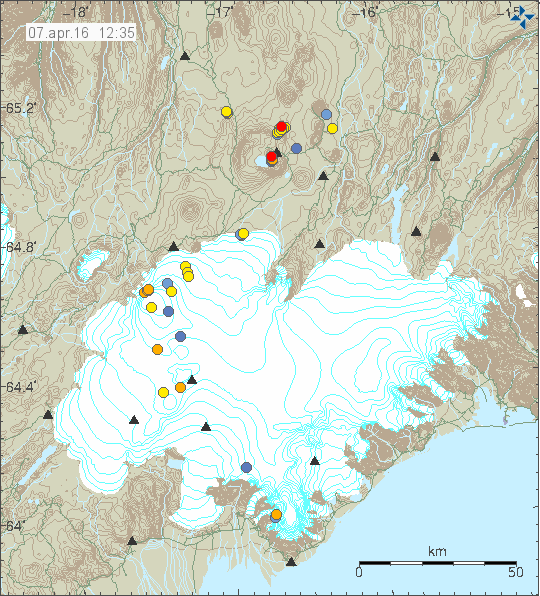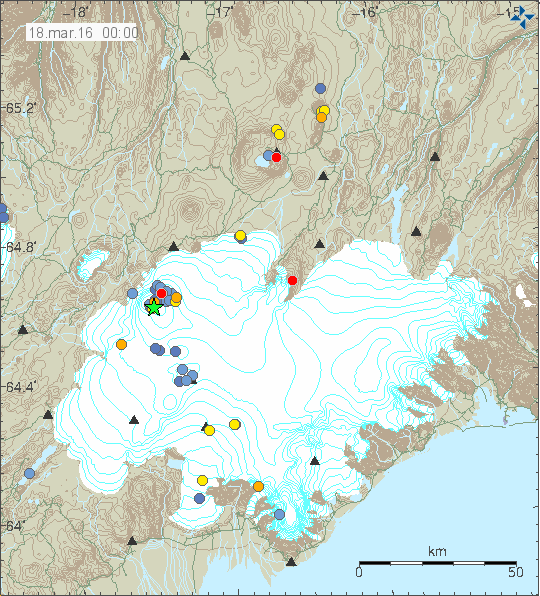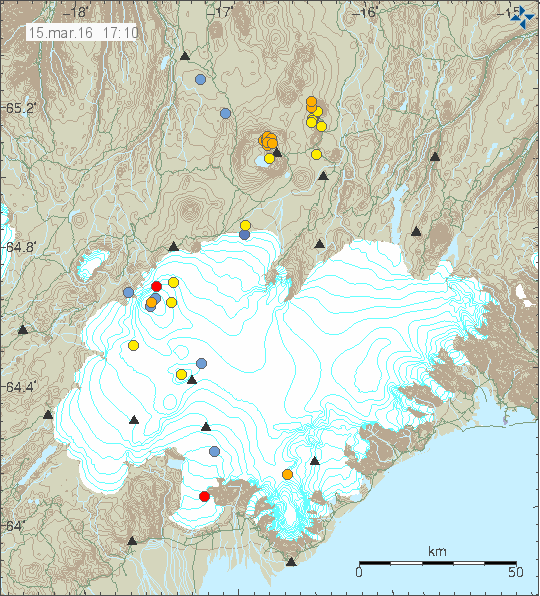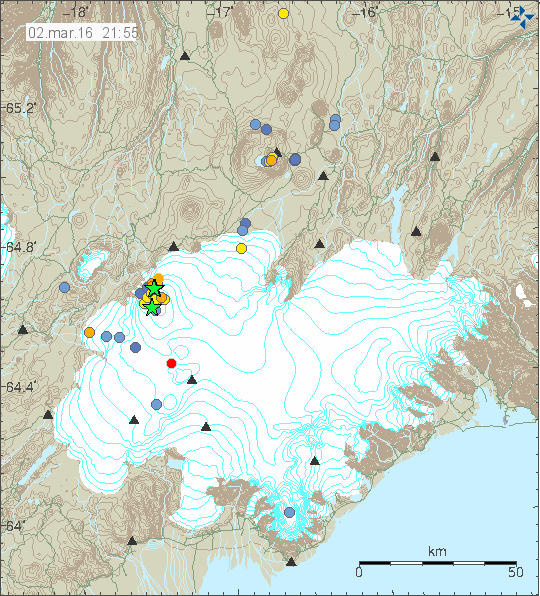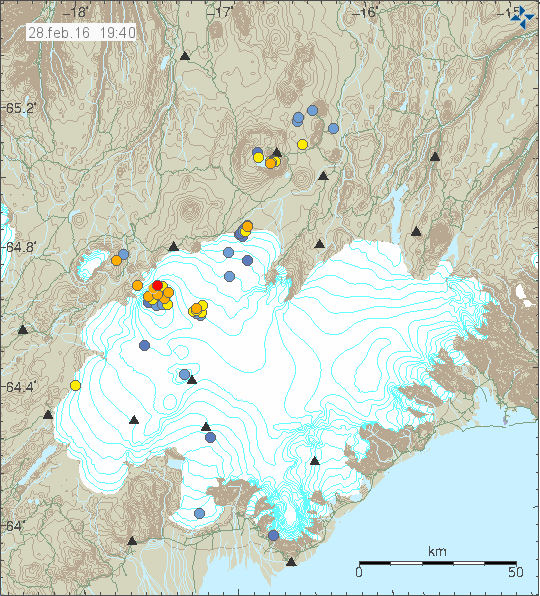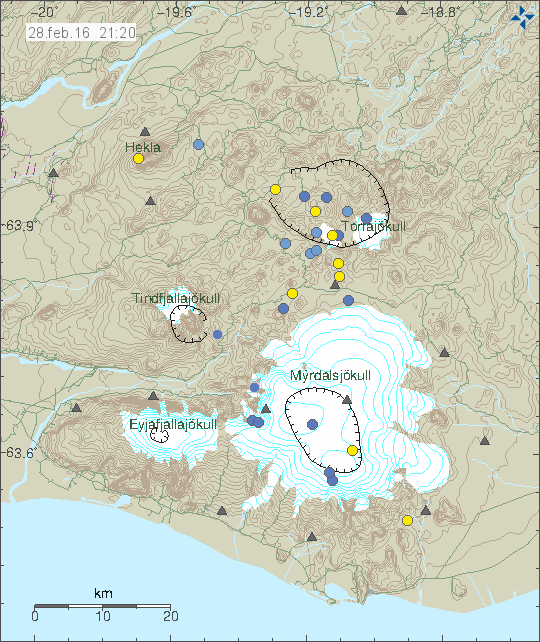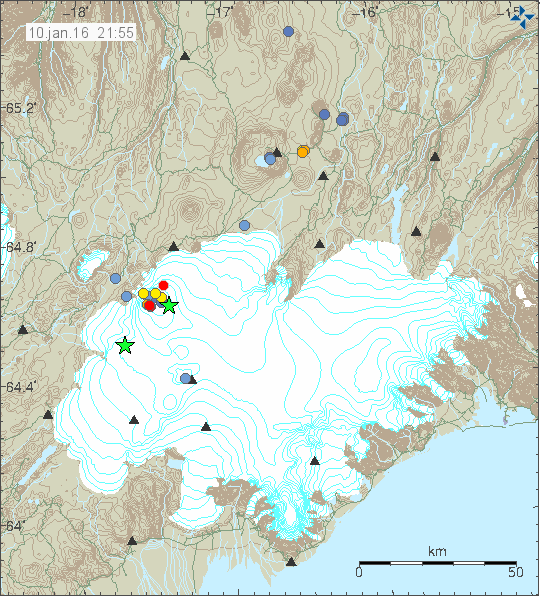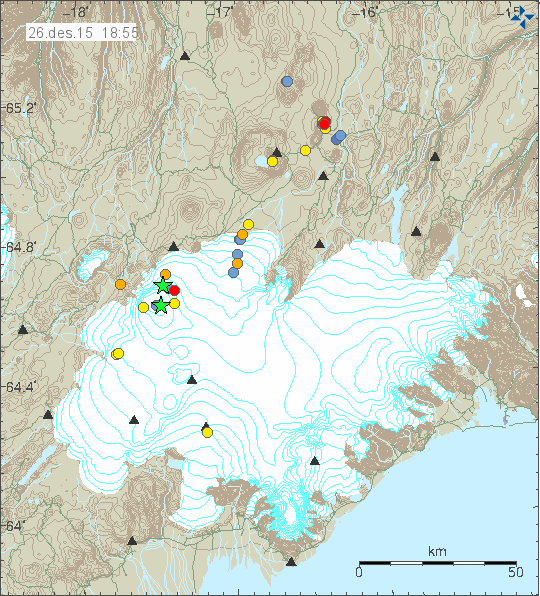Today (20-January-2016) at 13:05 UTC an earthquake swarm started in Bárðarbunga volcano. This earthquake swarm was not a surprise to me, since I had seen clues it would happen on 17 and 18 of January-2016 (more details later in this article). I wasn’t sure if it would happen.
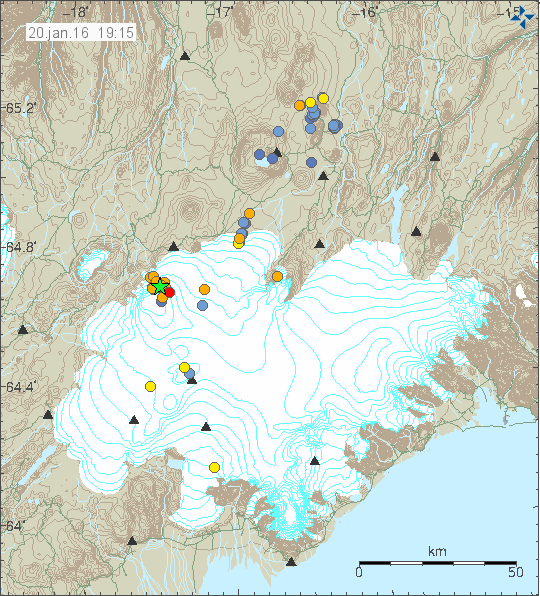
The earthquake swarm in Bárðarbunga volcano today. Copyright of this image belongs to Iceland Met Office.
The largest earthquake in this swarm had the magnitude of 3,6 and that is a increase in magnitude from last earthquake swarm taking place at this location two weeks ago. This earthquake appears to have been created by a magma breaking rock under pressure (low frequency element present in it).

The harmonic tremor plot from Vonarskarð SIL station, next to Bárðarbunga volcano. Copyright of this image belongs to Iceland Met Office.
I have noticed and I told Icelandic Met Office about this few days ago. There is a change in the harmonic tremor plot at 2-4Hz few days before an earthquake swarm starts in Bárðarbunga volcano. This has happened several times. Last time this happened is on 17 and 18 January-2016. Why this happens I don’t know for sure. One idea is that magma is over-pressuring once it enters the magma chamber and this might be gas release in the magma at the same time. If that is the reality, it is creating a magma foam at the top of the magma chamber that would erupt rather explosively when the pressure breaks the magma chamber currently holding it (see here, I’m not sure what this is called in science). This is only a idea that I have, but I find it the most likely explanation on what is going on in Bárðarbunga volcano. This might be wrong, but only time is going to tell what happens in Bárðarbunga volcano.
The time period between earthquake swarms is getting slightly shorter, now it’s around half a week from a whole week as was last month (December-2015). This change of phase suggests that more magma is flowing into the magma chamber and possibly in greater volume. The path the magma flows into the magma chamber is clear of all blockage, that means no earthquakes are created at that location. Current evidence suggest that only one magma chamber is being filled up with magma at the moment, but that magma chamber might be big and with some room left, but that might be quickly running out as is suggested by current earthquake swarms. The earthquake activity would be considerably higher if an eruption was about to start.
If anything more happens in Bárðarbunga volcano this week I’m going to update this article. Unless an eruption starts, then I’ll write a new one.
Update 1
A minor dyke intrusion took place in Bárðarbunga volcano caldera today (21-January-2016). The strongest earthquake in this dyke intrusion had the magnitude of 2,8 and depth of 2,5 km. This was a small and short event that took place.

The dyke intrusion in Bárðarbunga volcano took place in SW part of the caldera. Copyright of this image belongs to Iceland Met Office.
It’s difficult to know for sure what this means. What is clear is that magma is trying to break a path to the surface and it might have found a weak spot in the crust inside the caldera. If this starts to be a regular feature it means problems. This is the second weak spot to form in the caldera, the first one being in North-east part of the caldera, creating weekly earthquakes since September-2015.
Article updated at 01:52 UTC on 21-January-2016. Error fixed in date (it was not 10 and 11, it was 17 and 18th of January-2016).
Article updated at 20:56 UTC on 21-January-2016.
